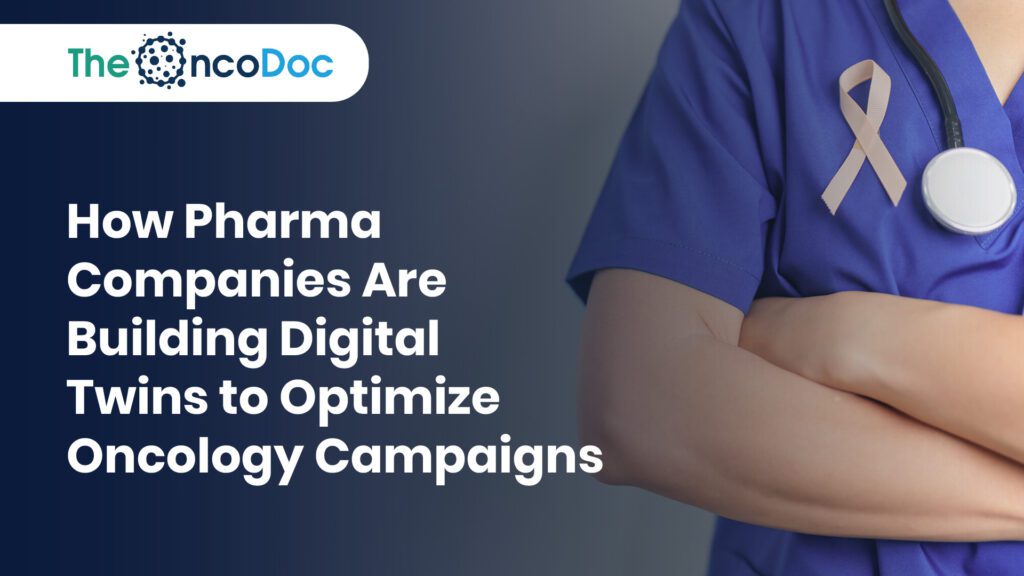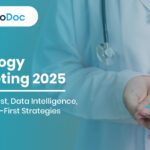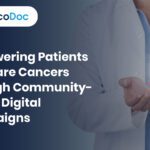Abstract
The pharmaceutical industry stands at the precipice of a new era, characterized by hyper-personalization and predictive intelligence. Central to this transformation is the emerging application of “digital twin” technology in oncology marketing. Traditionally rooted in engineering, digital twins – virtual replicas of physical systems – are now being leveraged to model complex patient journeys, healthcare professional (HCP) interactions, and marketing campaign dynamics within the sensitive oncology landscape. This article explores how pharma companies are building and deploying these sophisticated digital assets to gain unparalleled market intelligence, accelerate product launches, enhance personalized engagement, and optimize resource allocation in oncology. We delve into the underlying analytics, AI, and data integration required, examine the profound implications for digital marketing strategies, and address the critical ethical considerations in this innovative approach to patient-centric oncology care.
Introduction
Oncology marketing is arguably one of the most intricate and impactful domains within the pharmaceutical industry. Decisions here are not just commercial; they are deeply human, influencing patient lives, care pathways, and healthcare outcomes. The challenge for pharma companies has always been to effectively reach and engage diverse stakeholders – from patients navigating a life-altering diagnosis to oncologists evaluating complex therapeutic options – with accurate, relevant, and empathetic information, all while demonstrating tangible value.
In an increasingly digitized world, the traditional marketing funnel is evolving into a dynamic, interconnected ecosystem. Here, the concept of a “digital twin” is emerging as a powerful new paradigm. A digital twin is a virtual model designed to accurately reflect a physical object, process, or system. Continuously updated with real-time data from its physical counterpart, it allows for simulations, predictions, and optimizations that would be impossible or impractical in the real world. While initially prevalent in manufacturing and aerospace, this technology is now extending its transformative reach into healthcare, and specifically, into how pharmaceutical companies strategize and execute their oncology marketing campaigns.
This article will unpack the nascent yet rapidly growing application of digital twins in oncology marketing. We will explore how these algorithmic reflections of real-world scenarios are enabling unprecedented levels of personalization, predictive analytics, and strategic foresight. For doctors and pharma managers, understanding this shift is crucial for leveraging cutting-edge technology to enhance patient engagement, streamline clinical pathways, and ultimately, drive more impactful and ethically sound oncology campaigns.
Understanding the Digital Twin in Oncology Marketing
At its core, a digital twin in oncology marketing is not a simple data dashboard or a static model. Instead, it is a dynamic, continuously updated virtual representation of key elements within the oncology ecosystem. These elements can include:
- The Patient Digital Twin: A composite virtual profile of a specific patient, or a segmented patient group, built from aggregated, anonymized real-world data. This includes demographic information, disease progression data (if ethically sourced and consented), treatment history, digital engagement patterns, information-seeking behaviors, and even adherence patterns derived from de-identified data.
- The Healthcare Professional (HCP) Digital Twin: A virtual model of an oncologist, specialist, or care team, integrating data on their prescribing patterns, preferred communication channels, scientific interests, conference attendance, and engagement with pharma content.
- The Campaign Digital Twin: A simulation of an entire marketing campaign, including different channels, messaging variations, budget allocations, and target audience responses.
These digital twins are fueled by vast amounts of data, including electronic health records (EHRs – always anonymized and aggregated for marketing purposes), claims data, digital behavioral data (website visits, content downloads, search queries), social media interactions, CRM data, and market intelligence reports. Artificial intelligence (AI) and machine learning (ML) algorithms are fundamental to their operation, processing this data to create sophisticated models that can simulate various scenarios, predict future outcomes, and identify optimal strategies.
How Digital Twins are Optimizing Oncology Campaigns
The application of digital twins in oncology marketing promises to revolutionize traditional approaches by offering unprecedented levels of insight and precision:
1. Deep Market Intelligence and Scenario Planning: * Simulating Patient Populations: Pharma companies can create digital twins of various patient cohorts, allowing them to simulate the potential impact of a new therapeutic agent on different demographics, disease subtypes, and treatment lines. This enables forecasting demand, identifying unmet needs, and pinpointing patient segments most likely to benefit from or adopt a new drug. * Competitive Landscape Analysis: Digital twins can model competitor actions, launch strategies, and market responses, providing predictive insights into market dynamics. This allows for proactive adjustments to launch sequencing and marketing strategies. * Resource Allocation Optimization: By running simulations with different budget allocations across various channels and initiatives, digital twins can identify high-ROI tactics. This ensures marketing spend is directed towards the most effective strategies, minimizing waste and maximizing impact.
2. Accelerating Product Launches: * Pre-Launch Strategy Validation: Before a new oncology drug hits the market, a digital twin of its launch campaign can be simulated. This includes modeling patient and HCP uptake rates, potential communication roadblocks, and optimal messaging. This precision planning can significantly reduce time-to-market and ensure alignment between marketing strategies and clinical milestones. * Refining Messaging and Positioning: By simulating how different messages resonate with digital twins of target audiences, pharma companies can fine-tune their communication strategies, ensuring maximum impact and relevance.
3. Enhancing HCP and Patient Engagement through Personalization at Scale: * Tailored HCP Communications: An HCP digital twin can inform sales representatives and marketing teams about an individual oncologist’s preferred learning style, their specific patient caseload (anonymized data), and their interest in particular scientific data. This allows for highly personalized sales pitches, relevant scientific literature delivery, and targeted educational content, fostering stronger relationships. * Personalized Patient Support and Education: For patients, digital twins can enable the delivery of highly personalized educational materials, support program recommendations, and adherence reminders. By tracking a patient digital twin’s interaction with content (e.g., searches for side effect management, engagement with support group information), pharma can anticipate needs and offer proactive, empathetic support. This moves beyond generic campaigns to truly patient-centric engagement that respects individual journeys and information needs. For instance, a patient digital twin showing engagement with content about chemotherapy side effects might trigger tailored resources on managing nausea or fatigue. * Predictive Patient Engagement: Digital twins can predict which patients might be at risk of non-adherence or disengagement from their treatment plan based on their digital footprint and historical data. This allows for timely, targeted interventions (e.g., a personalized message from a patient support program) to improve adherence and outcomes.
4. Optimizing the Oncology Patient Journey: * Identifying Digital Gaps and Pain Points: By simulating thousands of patient journeys, digital twins can highlight common points of confusion, information gaps, or drop-offs in engagement within the digital ecosystem. This allows pharma companies to strategically place supportive content or tools at critical juncturess—from initial symptom search to post-treatment survivorship. * Mapping Patient Flow: Digital twins can model how patients interact with various digital touchpoints—from disease awareness websites to patient advocacy forums and clinical trial portals—providing a comprehensive view of their digital footprint and influencing factors.
The Analytics Engine: Powering Digital Twins in Oncology Marketing
The efficacy of digital twins is entirely dependent on a robust analytics infrastructure. This involves:
- Big Data Integration: Sourcing and integrating vast, diverse datasets from various internal and external sources, including anonymized patient registries, claims data, EHRs, pharmaceutical sales data, web analytics, social media data, and real-world evidence. The challenge lies in harmonizing disparate data types and ensuring data quality and consistency.
- Advanced AI and Machine Learning Models:
- Predictive Analytics: ML algorithms (e.g., regression models, neural networks) predict future behaviors, such as patient adherence, HCP prescribing patterns, or campaign effectiveness.
- Prescriptive Analytics: AI models recommend optimal actions or strategies based on predictive insights, for example, suggesting the best marketing channel for a specific patient segment to achieve a desired outcome.
- Natural Language Processing (NLP): Used to analyze unstructured data from patient forums, social media, and physician notes to glean sentiment, identify emerging concerns, and understand real-world language used by patients and HCPs.
- Simulation and Modeling Platforms: Specialized software platforms are required to build and run the digital twin simulations. These platforms must be capable of handling complex variables, running multiple scenarios, and providing intuitive visualizations of outcomes.
- Real-time Data Feeds and Feedback Loops: For digital twins to be “live,” they require continuous streams of real-time data from ongoing campaigns and external sources. A critical feedback loop ensures that the digital twin learns from actual campaign performance, continuously refining its predictive models and recommendations. This iterative optimization is key to their value.
- Robust Data Governance and Security: Given the sensitivity of health data, stringent data governance frameworks, privacy-enhancing technologies (e.g., anonymization, pseudonymization), and compliance with regulations like HIPAA and GDPR are non-negotiable.
Ethical Considerations and Challenges
While the potential of digital twins in oncology marketing is immense, their implementation comes with significant ethical responsibilities and challenges:
- Data Privacy and Security: The use of patient-level data, even if anonymized and aggregated, raises concerns about re-identification and potential misuse. Pharma companies must demonstrate absolute commitment to privacy, implement robust cybersecurity measures, and maintain transparency with all stakeholders.
- Bias in Algorithms: AI models are only as unbiased as the data they are trained on. If historical data reflects existing healthcare disparities, the digital twin might perpetuate or even amplify these biases in its predictions or recommendations for targeted marketing, potentially excluding or underserved patient populations. Continuous auditing and fairness checks are essential.
- Transparency and Explainability (XAI): Understanding why a digital twin recommends a particular strategy is crucial, especially when it impacts patient engagement. Black-box AI models, where the decision-making process is opaque, can erode trust. Developing explainable AI (XAI) is vital for ensuring accountability and facilitating adoption by HCPs.
- Patient Autonomy and Informed Consent: While digital twins optimize marketing, the ultimate decision-making power must remain with the patient and their healthcare provider. Marketing should inform and empower, not manipulate. Any collection of personal data for digital twin creation must be based on explicit, informed consent.
- Maintaining the Human Touch: Over-reliance on digital twins could risk dehumanizing the marketing process in oncology. The technology should augment, not replace, empathetic human interaction and clinical judgment. The “human in the loop” remains critical for interpreting results and ensuring compassionate communication.
- Integration Complexity: Integrating disparate data sources and legacy systems within pharma companies can be a significant technical and organizational hurdle.
- Cost and Expertise: Building and maintaining sophisticated digital twin platforms requires substantial investment in technology, data infrastructure, and specialized talent (data scientists, AI/ML engineers, bioinformaticians).
Future Outlook and Strategic Imperatives
The trajectory of digital twins in oncology marketing is clear: towards increasingly sophisticated, predictive, and personalized engagement. Future developments may include:
- Real-time Micro-Segmentation: Even more granular patient and HCP segments, enabling hyper-personalized messaging delivered at the precise moment of need.
- Proactive Intervention Models: Digital twins identifying patients at risk of progression or non-adherence, triggering pre-emptive, empathetic interventions.
- Unified Commercial Twins: Integrating patient, HCP, and market digital twins into a single, comprehensive “commercial twin” to optimize entire go-to-market strategies.
- Integration with Clinical Digital Twins: A future where marketing digital twins (focused on engagement) could potentially interface with clinical digital twins (focused on treatment simulation for individual patients, with strict ethical and regulatory boundaries), creating a truly holistic view of patient care, from awareness to outcome.
For doctors and pharma managers, the strategic imperatives are:
- Invest in Data Infrastructure and Talent: Lay the groundwork for robust data collection, integration, and analytics capabilities. Recruit or upskill teams with AI/ML expertise.
- Prioritize Ethical AI and Data Governance: Establish clear guidelines, ensure regulatory compliance, and build trust through transparent data practices.
- Foster Cross-Functional Collaboration: Digital twin initiatives require close collaboration between marketing, sales, medical affairs, R&D, and IT departments.
- Start Small and Scale: Begin with pilot projects to demonstrate value and refine the approach before broad implementation.
- Maintain Patient-Centricity: Never lose sight of the ultimate goal: improving patient lives. Technology must serve this core purpose.
Conclusion
The concept of digital twins offers a transformative lens through which to view and optimize oncology marketing campaigns. By creating dynamic, data-fed virtual replicas of patients, HCPs, and market scenarios, pharmaceutical companies can move beyond reactive strategies to proactive, predictive, and profoundly personalized engagement. This advanced application of AI and analytics promises to enhance the effectiveness of campaigns, accelerate the adoption of life-saving therapies, and foster deeper, more meaningful connections within the oncology community. However, the true promise of digital twins will only be realized if their development is firmly anchored in ethical considerations, prioritizing patient privacy, ensuring algorithmic fairness, and always upholding the empathetic human touch essential to cancer care. The era of the algorithmic reflection is here, offering an unprecedented opportunity to optimize oncology marketing for better health outcomes worldwide.
The Oncodoc team is a group of passionate healthcare and marketing professionals dedicated to delivering accurate, engaging, and impactful content. With expertise across medical research, digital strategy, and clinical communication, the team focuses on empowering healthcare professionals and patients alike. Through evidence-based insights and innovative storytelling, Hidoc aims to bridge the gap between medicine and digital engagement, promoting wellness and informed decision-making.



